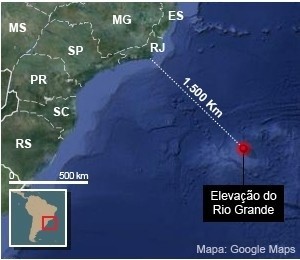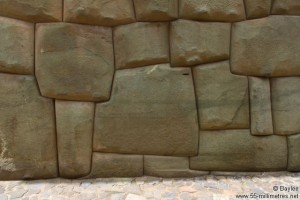Americo Huari Roman
Huari Román, Americo
Americo Huari Román (1950 – ) is a Peruvian electrical engineer who was  born in the former Inca capital of Cuzco. He is the author of La Atlantida y el Imperio de los Incas (Atlantis and the Empire of the Incas)[1127]. This is a bilingual book with a somewhat flawed English translation.
born in the former Inca capital of Cuzco. He is the author of La Atlantida y el Imperio de los Incas (Atlantis and the Empire of the Incas)[1127]. This is a bilingual book with a somewhat flawed English translation.
He contends that originally Atlantis had been an island in the Atlantic from where their influence spread to the the cultures of Europe, Africa and South America.Huari enters the realms of speculation with the wild claim that the Atlanteans used some form of levitation using anti-gravity fields! At the same time he also claims that they did not have the wheel as they did not need it! He quotes Blavatsky and other theosophists and psychics, which is probably where he got his ideas of advanced technology in Atlantis that is comparable with our own.
Even more disappointing for me was Huari’s failure to address Plato’s account, in particular the control of the Western Mediterranean by the Atlanteans from North Africa northward as far as modern Tuscany, and does not adequately explain the war with Egypt, if, as he claims[p.211] it was already an Atlantean colony!
Before the Great Deluge, Huari claims that most of central Brazil had been a huge inland sea and that Atlanteans and Arawaks lived around this lake and that one artifact left by them is the enormous carved Ingá Stone(c).
After the Deluge a cataclysm inundated Atlantis and Brazil rose 100 metres, which got rid of the inland sea. Some groups fled to the Andean highlands of Peru, eventually developing the Empire of Tiwanaku which later morphed into the Incan Empire.
Huari supports his views with a number of video clips (a) which unfortunately are only in Spanish. Huari published a new video(b) in July 2014.
(a) https://www.youtube.com/watch?v=gVzhBgn_am8
Brazil
Brazil was arguably (re)discovered by the Pinzon brothers, before Columbus first reached the West Indies according to Steven Sora(g). However, it is more generally accepted, particularly by Brazilians, that the Portuguese navigator Pedro Alvares Cabral was the first European to discover Brazil in 1500.
Brazil has had few serious investigators propose it as the location of Atlantis. Although, in 1947 Harold T. Wilkins claimed[0363.97] that Quetzalcoatl was from Atlantean Brazil. Earlier in the 20th century, Col. P.H. Fawcett, the famous explorer, disappeared while searching in the Brazilian rain forest for a ‘lost city’ that he called ‘Z’. A 2009 book by David Grann about Fawcett’s searches in Brazil, entitled The Lost City of Z [0772] was the basis for a film released in 2016. Sprague de Camp listed[0194.329] a George Lynch supporting a Brazilian Atlantis in 1925. In fact, Lynch was a fund-raiser for Fawcett. However, the Atlantisforschung website is adamant that there is no evidence that Lynch favoured Brazil as the location of Atlantis(i)!
However, although there is growing evidence of ancient roads, plazas and bridges in Brazil’s vast tropical forests, further data is needed before we can attempt to fit these structures into any specific culture or chronology.
An article(e) in the August 2017 edition of Antiquity offers evidence that humans lived in Brazil more than 20,000 years ago, which is many millennia before the Clovis people arrived in North America.Americo Huari Román is a Peruvian electrical engineer who was born in the former Inca capital of Cuzco. He is the author of La Atlantida y el Imperio de los Incas (Atlantis and the Empire of the Incas) [1448]. Before the Great Deluge, Huari claims that most of central Brazil had been a huge inland sea and that Atlanteans and Arawacs lived around this lake and that the one artefact left by them is the enormous carved Ingá Stone(j).
The possibility of Phoenician contact with Brazil has a number of supporters and a range of websites supports this controversial view(a). One such advocate, Ronald Barney, maintains[1185] that they concentrated their influence in the northeastern region of the country citing the work of Ludwig Schwennhagen[1550] and Apollinaire Frot(f).
There would appear to be evidence for 3rd century AD Roman contact with Brazil(h). The 1982 discovery of Roman amphorae in a shipwreck in Guanabara Bay near Rio de Janeiro, 15 miles offshore in 100 feet of water. This was badly received locally as it dispensed with the claim for Pedro Alvares Cabral having been the first European to land in Brazil(k)(l). The large number of amphorae found in the wreck would seem to indicate that their cargo had not been offloaded and as it was located 15 miles offshore, we have no reason to think that the ship ever reached land. I would speculate that the Guanabara wreck was simply blown of course while on a trading mission.
Whether other Roman vessels reached America with greater success is a more contentious matter. A variety of Roman artifacts have been discovered since the early nineteenth century, at various locations in America, inciting what was often furious debate(m)(n)(o). If the Romans had established links with the Americas, I find it hard to accept that they would not have broadcast the fact, if only to inflate their imperial ego!
 May 2013 saw a flurry of media interest when a Japanese submersible found evidence in the form of granite suggesting of a previously unknown continental mass that sank about 900 miles off the coast of Rio de Janeiro. Members of the expedition have played down any attempt to link this discovery with Atlantis(b)(c).
May 2013 saw a flurry of media interest when a Japanese submersible found evidence in the form of granite suggesting of a previously unknown continental mass that sank about 900 miles off the coast of Rio de Janeiro. Members of the expedition have played down any attempt to link this discovery with Atlantis(b)(c).
This reminiscent of the reaction in 1931 when two islands were reported to have emerged from the sea off Brazil and within a short time, claims that they were a returning Atlantis were widely quoted(d).
Any suggestion that the land of Hy-Brasil in Irish mythology has any connection with Brazil or Atlantis is just wild speculation.
(a) https://phoenicia.org/brazil.html
(c) https://www.counselheal.com/articles/5276/20130507/scientists-found-atlantis-coast-brazil.htm
(d) https://trove.nla.gov.au/ndp/del/article/98134066?searchTerm=Atlantis&searchLimits=
(e) https://www.sciencenews.org/blog/science-ticker/stone-age-people-brazil-20000-years-ago
(g) See: Archive 3480
(h) The Mysterious Ancient Underwater Roman Relics of Brazil | Mysterious Universe (archive.org) *
(i) George Lynch – Atlantisforschung.de (atlantisforschung-de.translate.goog)
(l) ‘Roman’ jars found in Guanabara Bay could re-write Brazil’s history | indy100
(m) Did Ancient Romans Reach The Americas Long Before Columbus? – Ancient Pages
(n) An Expert Doubts Roman Coins Found in U.S. Are Sea?Link Clue – The New York Times (nytimes.com)
(o) Mysterious jars found in Brazil offer world-changing version of history (msn.com) *
Incas
The Incas or at least their ancestors are claimed by Jim Allen to have ruled Atlantis, which he insists exited on the Altiplano of the Andes in Bolivia. However, the idea of a connection between Atlantis and the cultures of Central and South America is not new, having been first mooted by Pedro Samiento de Gamboa in 16th century. Supporters of the theory today cite the extremely controversial Oera Linda Book which states that one of the Frisian naval commanders named Inka reached America after the destruction of Atlantis. With this tenuous etymological link they conclude that he was the founder of the Inca civilisation, ignoring the fact that the earliest evidence for the Inca tribe dates to around 1200AD while the Oera Linda Book puts the destruction of Atlantis circa 2200BC, leaving an unexplained gap of nearly 3500 years. A Frisian–Inca connection is also proposed on the Stepping Stones website(a) which for good measure endeavours to link them with the Shang Chinese, the Magyars and, of course, the Atlanteans(b).
The great tragedy of the Inca culture is that they left no written records with the exception of the knotted strings known as quipu (khipu)(d). Gary Urton is a Professor of pre-Columbian Studies and has a website dedicated to the study of quipu(e). In April 2017, Sabine Hyland published a paper on some late 18th century khipus made of animal hair, which according to local Peruvian villagers contained an account of an uprising against the Spaniards(g)(i).
But now, Urton and Alejandro Chu, of the Universidad Nacional Mayor de San Marcos in Lima have studied a collection of khipus at the Inkawasi site have concluded that the khipus in question probably recorded taxes levied on local crops(j).
 Leaving aside any consideration of an Atlantean link with the Inca people, there is no doubt that that the Incas possessed remarkable construction capabilities. It has been estimated that they constructed nearly 25,000 miles of roadway in a period of around 100 years(f)! This network, known as Qhapaq Ñan, extends over six countries and is now a Unesco World Heritage Site, the largest on the planet. Unfortunately it has been allowed to deteriorate. Efforts are being made to redress this unfortunate situation(h).
Leaving aside any consideration of an Atlantean link with the Inca people, there is no doubt that that the Incas possessed remarkable construction capabilities. It has been estimated that they constructed nearly 25,000 miles of roadway in a period of around 100 years(f)! This network, known as Qhapaq Ñan, extends over six countries and is now a Unesco World Heritage Site, the largest on the planet. Unfortunately it has been allowed to deteriorate. Efforts are being made to redress this unfortunate situation(h).
The megalithic masonry to be found in Cusco, their ancient capital, further highlights their outstanding construction abilities. A recent well-illustrated book by Brien Foerster, Lost Ancient Technology of Peru and Bolivia[923] examines a range of Incan sites and their often enigmatic monuments. This is a valuable addition to the literature on the subject.
In 2007 the Peruvian engineer and writer, Jesus Americo Huari Roman (1950-), wrote a book (for private circulation) entitled La Atlantida y el Imperio de los Incas (Atlantis and the Empire of the Incas), in which he also argues that then Incas were descendants of the Atlanteans. He has video clips on YouTube supporting his theory(a), unfortunately, with Spanish dialogue only.
(a) https://www.youtube.com/user/JESUSAMERICO100/feed
(b) https://all-ez.com/epigraphy.htm
(c) https://all-ez.com/frisian-inka.htm
>(d) http://enperublog.com/2009/06/30/unlocking-the-secrets-of-the-quipus/
(e) Researchers (archive.org)<
(g) https://www.sciencenews.org/article/twisted-textile-cords-may-contain-clues-inca-messages?tgt=nr
(h) https://www.bbc.com/travel/gallery/20170912-a-30000km-road-network-from-the-andes-to-the-amazon
(i) https://www.scientificamerican.com/article/unraveling-an-ancient-code-written-in-strings/
(j) https://www.sciencenews.org/article/khipus-knotted-cords-incas-taxes
